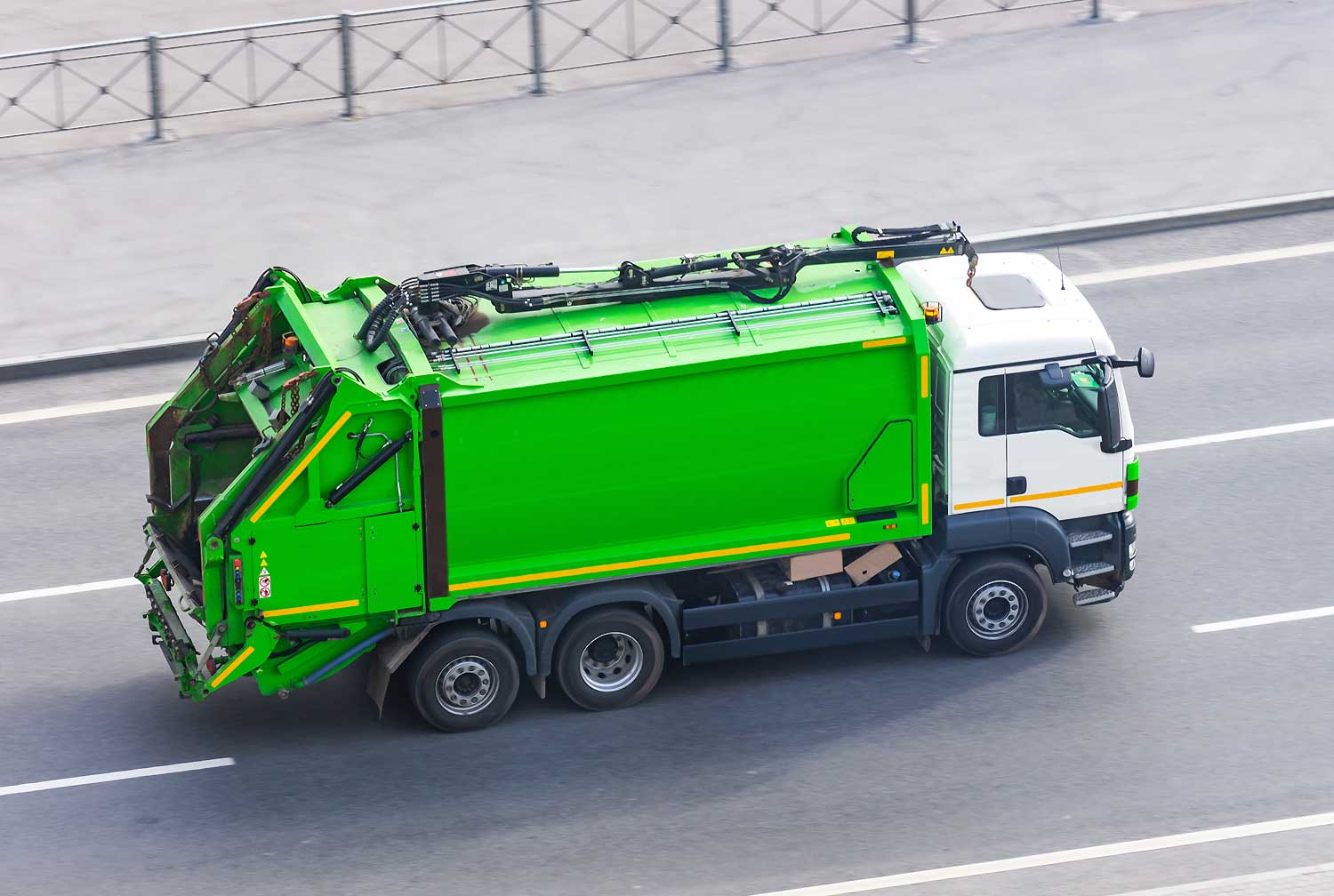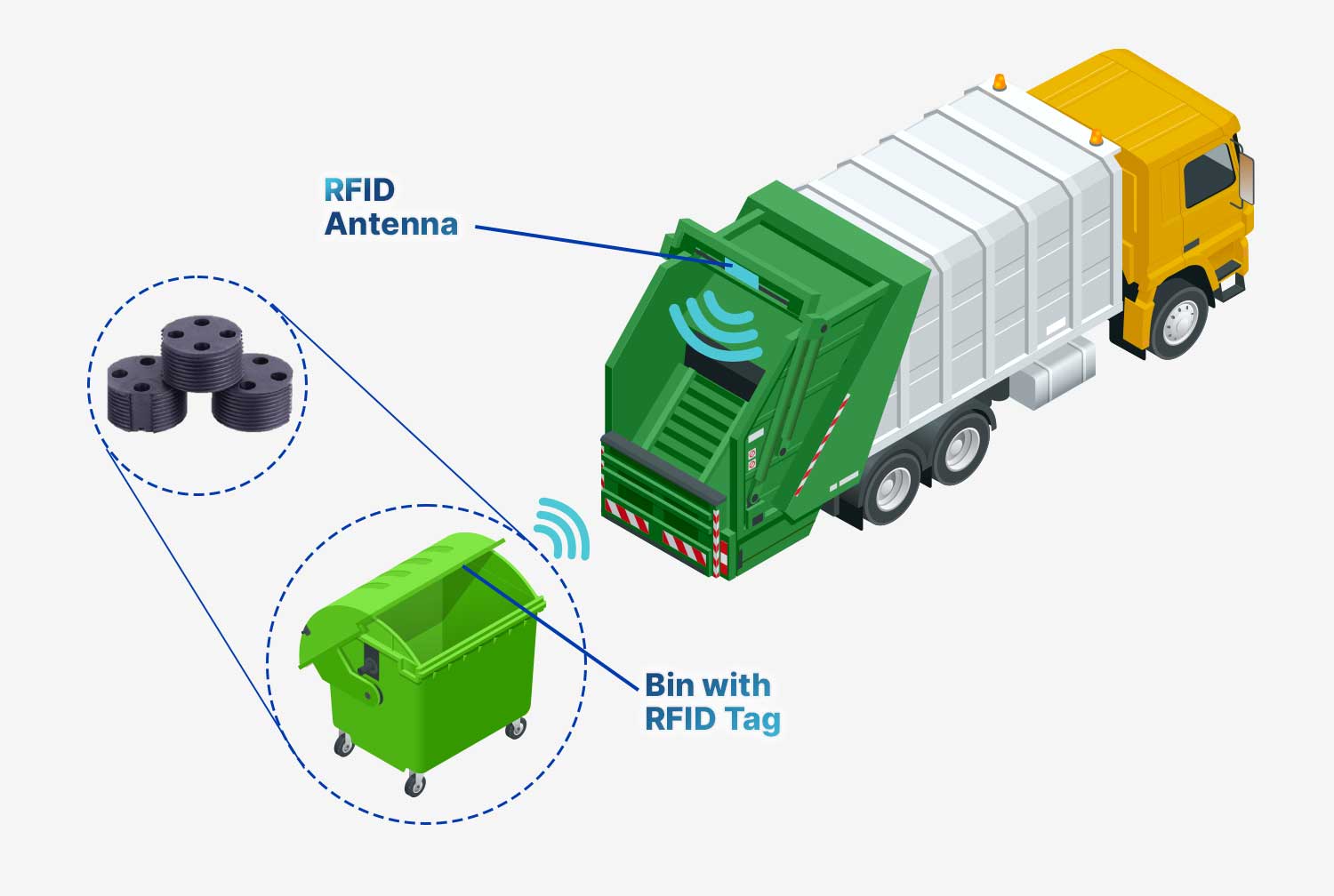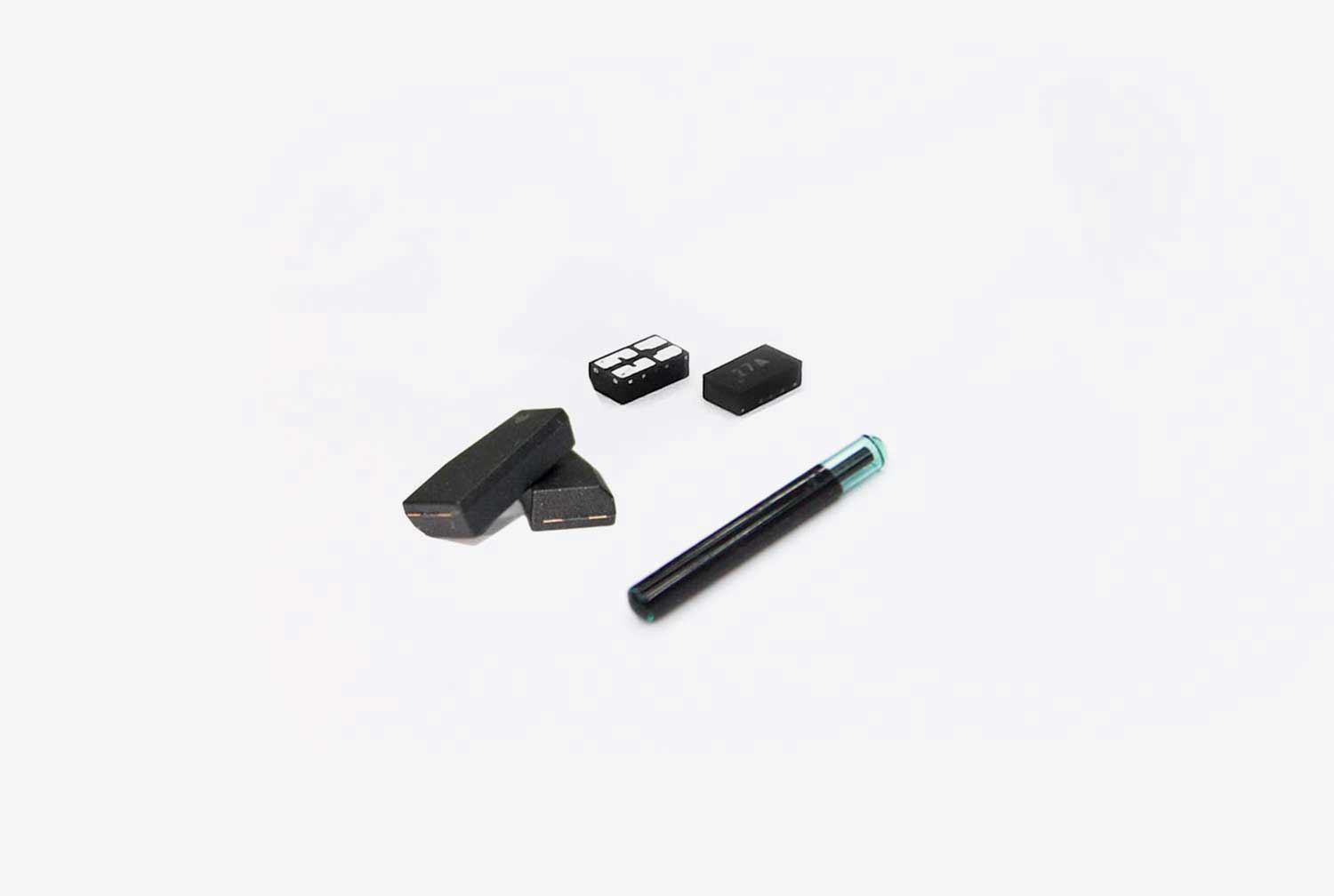Articles
Tackling Municipal Waste: How LF RFID Technology Transforms Waste Management

Municipal waste is one of the fastest-growing challenges of modern cities. The World Bank projects that global municipal solid waste will rise from 2.01 billion tonnes in 2016 to 3.40 billion tonnes by 2050. If left unmanaged, this surge will place enormous strain on public health and the environment. Overflowing landfills generate greenhouse gas emissions, toxic leachate from plastics and chemicals pollutes waterways, and open dumping and burning release pollutants that contaminate air, water, and soil, threatening both ecosystems and communities [1]. Effective waste management is therefore not only about keeping cities clean, but also about reducing emissions and protecting human health.
In many countries, waste collection remains unreliable and difficult to verify. Without systems to track which bins are collected, large portions of waste go unrecorded, leaving households with little choice but to dump or burn refuse in open spaces. Even when collection occurs, billing is typically flat-rate, financed through general revenues or fixed fees that do not reflect how much waste is actually produced [1].

Fig 1: A garbage truck goes to collect waste at the destination.
With no reliable way to monitor which bins were collected or how much each household generates, accountability is weak and incentives to recycle remain low. These gaps highlight the need for fairer, more transparent systems that can record waste at the household level and support more sustainable practices.
This is where effective waste management comes in. To address these challenges, this article explores how RFID technology is applied in municipal waste management, its role in improving accountability, fairness, and environmental responsibility, and how Silicon Craft’s SIC379 supports traceability, household-level monitoring, and more transparent collection systems to build cleaner, more sustainable cities.
RFID in Waste Management
To address the growing challenges of waste collection, many cities are adopting Pay-As-You-Throw (PAYT), a system that charges households based on the amount of waste they produce. This approach introduces accountability, fairness, and environmental responsibility, and has already delivered strong results worldwide. A clear example comes from Germany’s Aschaffenburg County, which shows how PAYT can transform waste management.
Before PAYT was introduced in 1997, residual waste in Aschaffenburg averaged about 163 kg per capita annually. With the shift to a weight-based system, where each household bin was uniquely identified and weighed at collection, residual waste fell to just 55 kg per capita by 2013. At the same time, recycling rates surged above 70%, reaching as high as 86% in some years. By contrast, Germany overall recorded only a more modest decline, from about 380 kg to 220 kg per capita, underscoring the stronger impact of Aschaffenburg’s PAYT strategy [2].

Fig 2: The RFID reader system is installed at the rear of the sanitation vehicle. It reads the bin with RFID tag during collection.
While PAYT can also be implemented using prepaid bags or fixed-volume bins, its most precise and equitable form relies on technologies that can both identify each household’s waste and measure it accurately. This is where Radio Frequency Identification (RFID) plays a vital role. By assigning a unique ID to every bin, which links to an online database and recording each collection event such as household details, collection history, waste volume and billing records, RFID enables municipalities to directly link waste output to households. Operating in the low-frequency (LF) band of 125–134.2 kHz, RFID systems are especially well-suited for waste management, remaining reliable even when bins are exposed to moisture, dirt, or metal collection vehicles.
The Aschaffenburg case demonstrates how PAYT, when supported by bin-level identification, can drive down residual waste while boosting recycling rates to some of the highest levels achieved in Europe.
Enhancing Waste Management with SIC379
The EN14803 standard, a European guideline for waste bin identification, ensures consistent and accurate tracking across different systems and service providers.
It defines how identification devices such as RFID tags should be placed, read, and processed to guarantee interoperability between bins, vehicle readers, and back-office systems. By complying with EN 14803, waste operators can ensure that every bin is uniquely identified, every pickup is logged without error, and every household is treated fairly under standardized rules.
The SIC379 from Silicon Craft is a high-performance transponder and IC that supports the EN14803 standard. Operating at 134 kHz, it’s designed for precise bin identification, which is crucial for fair billing and Pay-As-You-Throw (PAYT) systems. The product’s 192-bit user memory stores a unique ID for each bin, creating a reliable link between specific households and waste collection events.

Fig 3: Silicon Craft’s SIC379 RFID transponders & IC
Designed as a passive RFID chip, the SIC379 requires no battery and offers over 10 years of data retention. This not only reduces maintenance costs for operators but also eliminates hazardous battery waste, lowers environmental impact, and contributes to more sustainable waste management practices. Its long read range, enhanced by Silicon Craft’s exclusive intellectual property (IP), delivers dependable performance even when bins are exposed to moisture, dirt, noises.
By combining standard compliance, robust design, and durability, the SIC379 provides municipalities with a powerful tool to strengthen traceability and accountability in waste management.
Conclusion
While municipal waste continues to pose environmental and public health challenges, technologies like RFID are helping cities modernize collection systems with greater accountability and fairness. With solutions such as Silicon Craft’s SIC379, municipalities can ensure reliable bin identification, support PAYT policies, and improve long-term traceability. As demands for cleaner and more sustainable cities grow, RFID integration is no longer optional—it is essential for building transparent and resilient waste management systems.
References
[1] Open Knowledge Repository. (2025). Worldbank.org.
https://openknowledge.worldbank.org/entities/publication/d3f9d45e-115f-559b-b14f-28552410e90a?utm=
[2] Morlok, J., Schoenberger, H., Styles, D., Galvez-Martos, J.-L., & Zeschmar-Lahl, B. (2017). The Impact of Pay-As-You-Throw Schemes on Municipal Solid Waste Management: The Exemplar Case of the County of Aschaffenburg, Germany. Resources, 6(1), 8.
https://doi.org/10.3390/resources6010008



